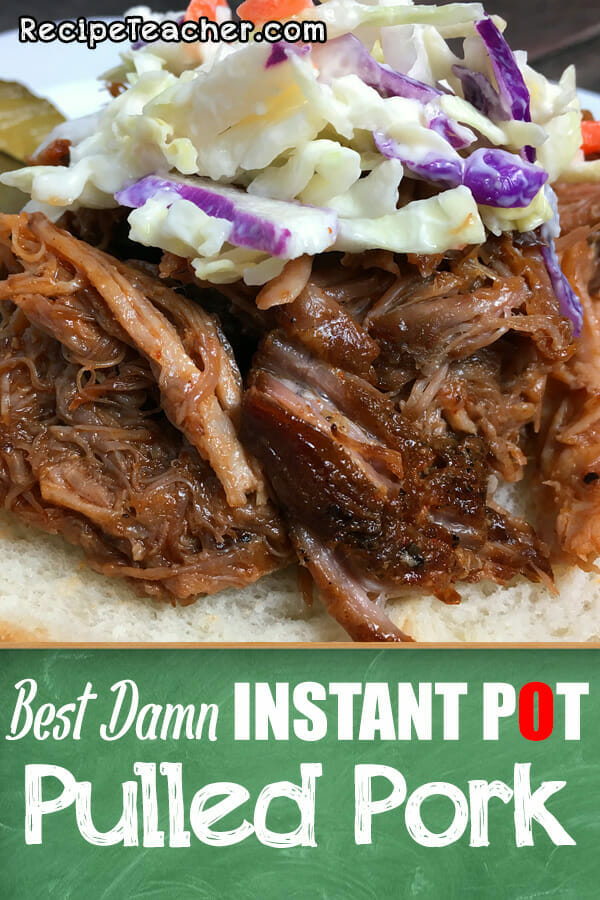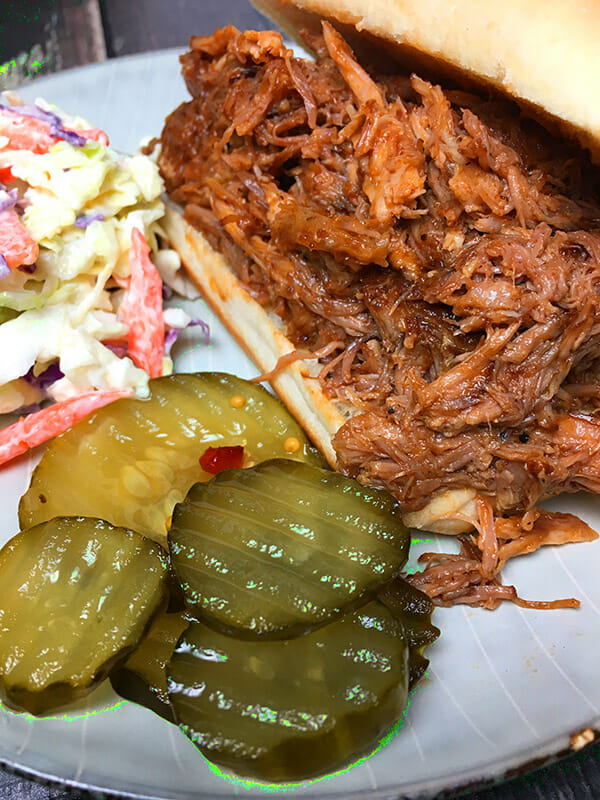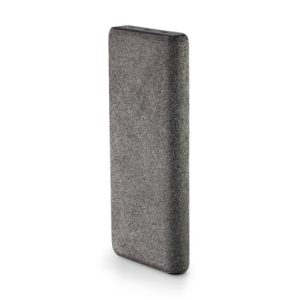Contents
Today, you will uncover the ultimate guide to achieving the most delectable pulled pork you have ever tasted. Prepare yourself for a mouthwatering journey filled with secrets, tips, and tricks to transform a humble piece of pork into a succulent masterpiece. With these invaluable insights, you will soon be able to savor the best damn pulled pork that will have your taste buds dancing and your friends begging for the recipe. Get ready to embark on a culinary adventure like no other as we uncover the secrets to perfection!
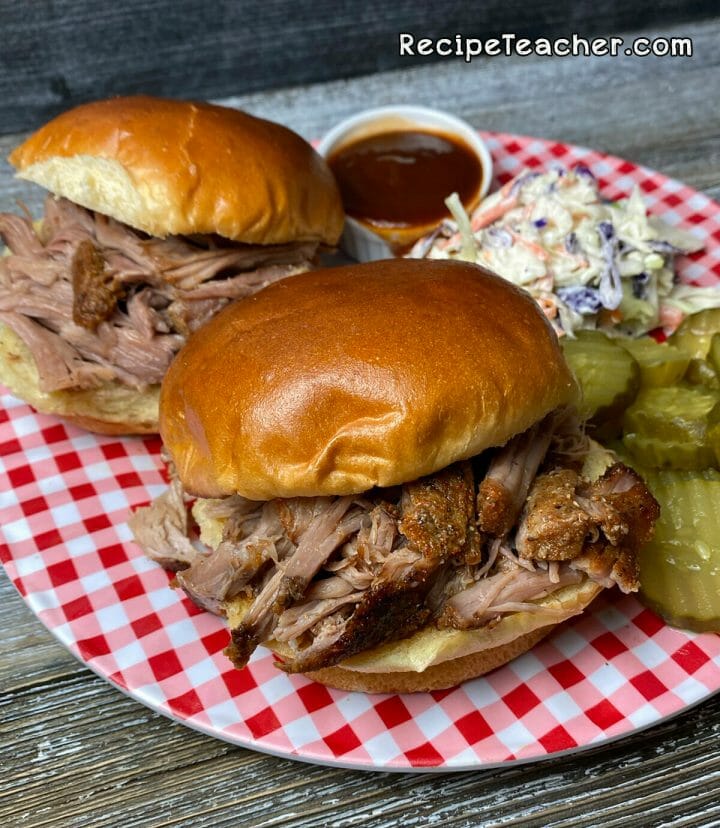
Choosing the Right Cut of Pork
Pork Shoulder vs. Pork Butt
When it comes to making the best damn pulled pork, choosing the right cut of pork is crucial. Two popular options for making pulled pork are pork shoulder and pork butt. While both cuts come from the shoulder of the pig, they have slight differences in texture and flavor.
Pork shoulder is typically a larger cut with more marbling and fat content. This results in a juicier and more flavorful pulled pork. On the other hand, pork butt is a smaller, leaner cut that is often preferred by those who prefer a slightly drier and less fatty pulled pork. Ultimately, the choice between pork shoulder and pork butt comes down to personal preference and desired outcome.
Bone-In vs. Boneless Pork
Another decision to make when selecting your pork cut is whether to go bone-in or boneless. Each option has its own advantages and considerations.
Bone-in pork adds extra flavor and moisture to the meat during the cooking process. The bone acts as a natural heat conductor, resulting in a more even distribution of heat throughout the pork. Additionally, some people believe that leaving the bone in helps to keep the meat more tender and flavorful. On the other hand, boneless cuts of pork can be more convenient and easier to work with, especially when it comes to shredding the meat after cooking.
Fresh vs. Frozen Pork
When it comes to choosing between fresh and frozen pork, both options have their pros and cons.
Fresh pork is often preferred by those who value the quality and flavor of their meat. It allows for immediate preparation and cooking, resulting in a fresher tasting pulled pork. However, fresh pork may not always be readily available and can have a shorter shelf life.
On the other hand, frozen pork can be a convenient option, especially if you want to plan ahead or have limited access to fresh meat. Freezing the pork can help preserve its quality and can also make it easier to handle when it comes time to trim and season the meat. Just make sure to thaw the pork properly before cooking to ensure even cooking and avoid any potential food safety risks.
Preparing the Pork
Trimming the Excess Fat
Before cooking your pork, it’s important to trim off any excess fat. While some fat is desirable as it adds flavor and moisture to the meat, too much can result in greasy and heavy pulled pork.
Begin by using a sharp knife to remove any large and visible chunks of fat. Be cautious not to remove too much, as you want to maintain some fat for flavor. Additionally, trimming off any silver skin or connective tissue will help ensure a more tender and enjoyable eating experience.
Dry Brining the Pork
Dry brining is an important step in preparing the pork as it helps to enhance the flavor and texture of the meat. To dry brine, generously sprinkle kosher salt all over the pork, making sure to cover all sides. Then, place the pork on a wire rack or in a shallow dish and refrigerate for at least 12 hours, or overnight.
The dry brining process allows the salt to penetrate the meat, drawing out moisture and intensifying the pork’s natural flavors. It also helps to tenderize the meat, resulting in a more succulent and delicious pulled pork.
Marinating the Pork
While dry brining is great for enhancing flavor, marinating the pork can add an extra layer of complexity to your pulled pork. You can choose from a variety of marinade options, depending on your taste preferences.
A simple marinade can consist of ingredients like apple cider vinegar, Worcestershire sauce, brown sugar, and various spices. Combine these ingredients in a bowl or zip-top bag, add the pork, and allow it to marinate in the refrigerator for at least 6 hours, or overnight. The longer the pork marinates, the more flavorful it will become.
Marinating the pork not only infuses it with additional flavors but also helps to keep the meat moist during the cooking process.
Creating the Perfect Rub
Choosing the Right Spices
A flavorful rub is key to achieving the best damn pulled pork. When choosing spices for your rub, it’s important to consider a balance of flavors.
Common spices for a pork rub include paprika, chili powder, cumin, garlic powder, onion powder, black pepper, and brown sugar. These spices work together to add depth and complexity to the pork, creating a mouthwatering flavor profile.
Experiment with different spice combinations to find the perfect blend that suits your taste buds. Don’t be afraid to get creative and try adding additional spices or herbs to tailor the rub to your liking.
Balancing Sweet, Savory, and Spicy Flavors
The ideal pork rub should strike a harmonious balance between sweet, savory, and spicy flavors. This balance will ensure that the pulled pork is not overpowering in any one aspect and will cater to a wide range of taste preferences.
To achieve a balanced rub, combine sweet ingredients like brown sugar or honey with savory spices like paprika and cumin. Add a touch of heat with a chili powder or cayenne pepper, adjusting the amount to your desired level of spiciness. Taste as you go, making adjustments as needed to achieve the perfect balance.
Applying the Rub
When it comes to applying the rub to the pork, make sure to coat all sides of the meat evenly. Start by patting the pork dry with a paper towel to remove any excess moisture. This will help the rub adhere to the meat better.
Once the pork is dry, generously sprinkle the rub over all surfaces, using your hands to massage it into the meat. Make sure to cover every nook and cranny, ensuring that the flavors penetrate the meat evenly.
Allow the rubbed pork to sit at room temperature for about 30 minutes before proceeding to the next step of the cooking process. This will allow the flavors to meld and penetrate the meat even further.
Prepping the Smoker or Grill
Choosing the Right Equipment
To create the best damn pulled pork, having the right equipment is essential. The two main options for cooking pulled pork are a smoker or a grill.
A smoker is specifically designed for low and slow cooking, which is the ideal method for achieving tender and flavorful pulled pork. Smokers come in various types, such as charcoal, electric, or propane. Each type has its own advantages and considerations, so choose the one that aligns with your cooking preferences.
If you don’t have a smoker, a grill can also be used to make pulled pork. Gas grills or charcoal grills can both produce delicious results, although they may require a bit more attention and monitoring compared to a smoker.
Whichever method you choose, make sure your equipment is in good working condition and properly maintained for optimal cooking results.
Setting up the Charcoal or Wood
If you opt for a charcoal or wood smoker or grill, setting up the charcoal or wood correctly is crucial for achieving the best damn pulled pork.
Start by selecting high-quality charcoal or wood chunks that complement the flavors you desire. Popular choices include hickory, applewood, or oak, each imparting a distinct smoky flavor.
Arrange the charcoal or wood in the smoker or grill according to the manufacturer’s instructions. For smokers, it’s essential to use a chimney starter to easily and evenly ignite the charcoal. This method ensures a steady and consistent heat source throughout the cooking process.
Once the charcoal or wood is properly set up and lit, allow it to burn down until it reaches the ideal cooking temperature, which is typically around 225-250°F (107-121°C). This low and slow cooking method allows the pork to cook slowly, resulting in tender and flavorful pulled pork.
Maintaining the Ideal Temperature
Maintaining a consistent and ideal cooking temperature is essential when smoking or grilling pork. Fluctuations in temperature can affect the cooking time and the overall outcome of the pulled pork.
Invest in a reliable meat thermometer to monitor the internal temperature of the pork throughout the cooking process. This will help ensure that the pork reaches the safe internal temperature of 145°F (63°C) and is cooked to perfection.
Adjust the vents on your smoker or grill as needed to maintain a steady and constant cooking temperature. It’s important to resist the temptation to constantly open the lid, as this can cause temperature fluctuations and extend the cooking time.
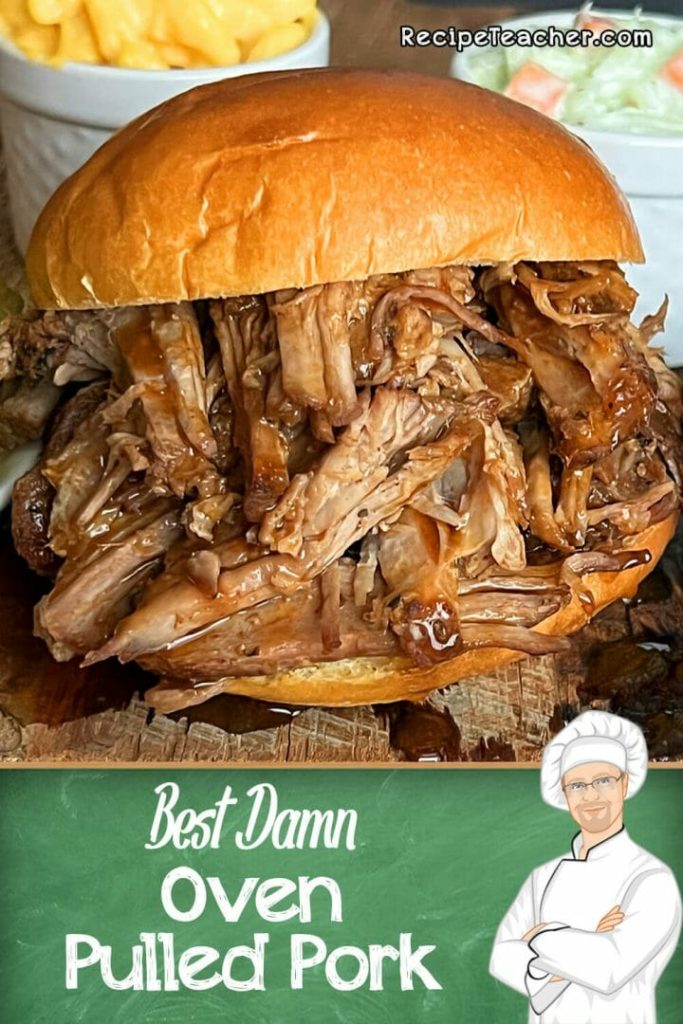
Smoking or Grilling the Pork
Low and Slow Cooking Method
The key to achieving the best damn pulled pork is using the low and slow cooking method. This means cooking the pork at a low temperature for an extended period, allowing the meat to become tender and infused with smoky flavors.
Whether smoking or grilling, maintain a consistent cooking temperature of around 225-250°F (107-121°C). Cooking times will vary depending on the size and cut of the pork, but as a general guideline, plan on cooking for approximately 1.5-2 hours per pound.
During the cooking process, ensure the temperature remains constant and avoid unnecessary lid openings. This will help maintain a steady flow of heat and smoke, allowing the pork to cook evenly.
Adding Wood Chips or Chunks for Smoky Flavors
To infuse your pulled pork with delicious smoky flavors, adding wood chips or chunks is essential. Soak the wood chips or chunks in water or any liquid of your choice, such as apple juice or beer, for at least 30 minutes before use. This ensures that the wood produces a steady and flavorful smoke throughout the cooking process.
Place the soaked wood chips or chunks on top of the heated charcoal or in the smoker box of your grill or smoker. The smoldering wood will release aromatic smoke that will enhance the taste of the pork.
Experiment with different wood varieties to find the flavor profile that suits your taste. Hickory, applewood, and cherrywood are popular choices that add a rich and smoky taste to the pulled pork.
Using a Water Pan for Moisture
To keep your pulled pork moist and prevent it from drying out during the long cooking process, using a water pan is highly recommended. This acts as a heat barrier and adds moisture to the smoker, ensuring your pork stays juicy and tender.
Fill a large, shallow pan with water or any liquid of your choice, such as apple cider or broth. Place the pan directly beneath the cooking grate, opposite the charcoal or wood. The water will evaporate and create a humid environment inside the smoker, preventing the pork from drying out.
Check the water pan periodically throughout the cooking process and replenish with more liquid as needed. This will help maintain a consistent humidity level and promote even cooking and moisture retention in the pulled pork.
Monitoring the Cooking Process
Using a Meat Thermometer
To ensure your pulled pork is cooked to the perfect doneness, using a meat thermometer is essential. Insert the thermometer probe into the thickest part of the pork, without touching the bone, to get an accurate reading of the internal temperature.
For pulled pork, the pork should reach an internal temperature of 195-205°F (91-96°C). At this temperature range, the collagen in the meat breaks down, resulting in tender and easily shreddable pork.
Avoid overcooking the pork, as this can lead to dry and tough meat. Use the meat thermometer as a guide to determine when the pork is ready to be removed from the smoker or grill.
Basting the Pork Periodically
Throughout the cooking process, periodic basting of the pork can add moisture and additional flavor to the meat. Basting involves brushing the pork with a liquid of your choice, such as a marinade, barbecue sauce, or apple juice.
To baste the pork, use a heat-resistant basting brush and carefully brush on the liquid, taking care not to disturb the cooking process or lose too much heat from the smoker or grill. Baste the pork every 1-2 hours to maintain flavor and moisture.
Remember that basting too frequently can cause the pork’s crust to become soft or soggy, so it’s important to find a balance that works for you.
Rotating the Meat
While cooking your pulled pork, consider rotating the meat periodically to ensure even exposure to heat and smoke. This can help prevent any hot spots in the smoker or grill and ensure consistent cooking throughout the pork.
Rotate the pork every 1-2 hours, taking care not to disrupt the cooking process or cause temperature fluctuations. By rotating the meat, you’ll achieve more even browning and smoky flavor distribution, resulting in a perfectly cooked and flavorful pulled pork.

Wrapping and Resting the Pork
Indirect Heat Method for Tenderness
After the pork reaches the desired internal temperature, it’s time to wrap it in foil or butcher paper and allow it to rest. This step is crucial for achieving tender pulled pork.
The wrapping process, also known as the Texas crutch, involves sealing the pork tightly in foil or butcher paper. This method creates a steamy environment that helps to break down the collagen in the pork, resulting in tender and melt-in-your-mouth pulled pork.
Place the wrapped pork back on the smoker or grill, or in a preheated oven set to a low temperature of around 225°F (107°C). Allow the pork to rest for at least 1 hour, or up to 3 hours if time allows. This resting period allows the pork to continue cooking and for the flavors to meld together, resulting in a superbly tender final product.
Foiling or Wrapping the Pork
When it comes to wrapping the pork, there are two main options: foil or butcher paper. Both methods will help retain moisture and tenderize the meat, but they have slight differences in the final outcome.
Foil wrapping creates a more moist and tender pulled pork, as it locks in the pork’s natural juices. The foil acts as a barrier, preventing any evaporation and steam-circulating around the meat. This method is preferred by those who enjoy a juicier pulled pork.
Butcher paper wrapping, on the other hand, allows the pork to breathe slightly, resulting in a bark with a bit more texture. The paper still retains moisture, but it allows for some evaporation, resulting in a crisper exterior. This method is popular among those who prefer a more traditional and less soft texture in their pulled pork.
Choose the wrapping method that aligns with your personal preference for texture and moisture.
Allowing the Pork to Rest
Once the pork is wrapped, resist the temptation to immediately tear into it. Allowing the pork to rest is crucial for achieving the best damn pulled pork.
During the resting period, the meat’s juices redistribute, resulting in a more evenly flavored and tender final product. Resting also ensures that the pork remains moist and juicy, even after shredding.
Keep the wrapped pork in a warm place, such as a cooler lined with towels or in a preheated oven set to the lowest temperature. Allow the pork to rest for at least 1 hour, or up to 3 hours if time allows. The longer the rest, the better the results.
Pulling and Saucing the Pork
Shredding the Cooked Pork
After the pork has rested, it’s time to unleash your inner pitmaster and shred the meat. Using a pair of heat-resistant gloves or forks, pull the pork apart into small, bite-sized pieces.
The pulled pork should have a tender and easily shredabble texture, allowing you to separate the meat effortlessly. Be sure to remove any excess fat or gristle as you go. This process of pulling the pork helps to further enhance the tenderness and allows the meat to absorb any remaining juices and flavors.
Mixing in Barbecue Sauce or Mop Sauce
To add even more flavor to your pulled pork, consider mixing in some barbecue sauce or mop sauce. Barbecue sauce helps to enhance the smoky and savory flavors of the pork, while mop sauce adds moisture and tanginess.
Choose your favorite barbecue sauce or make your own from scratch. The sweetness, spiciness, and tanginess of the sauce can be adjusted to suit your personal taste. Mix the sauce into the shredded pork, starting with a small amount and adding more as desired. Be careful not to overpower the pork with sauce, as the meat should still shine through.
For mop sauce, baste the shredded pork with the sauce and lightly toss to coat. This will help infuse the meat with additional flavors and keep it moist.
Adjusting the Seasonings
Before serving your pulled pork, take a moment to taste and adjust the seasonings if necessary. This is your opportunity to add any additional spices, salt, or pepper to amp up the flavor to your liking.
Taste a small portion of the pulled pork and assess the overall balance of sweet, savory, and spicy flavors. Make small adjustments as needed, keeping in mind that the flavors will continue to develop and meld together as the pork sits.
Remember, it’s always easier to add more seasoning than to remove it, so start with a light hand and gradually build up until you achieve the perfect blend of flavors.
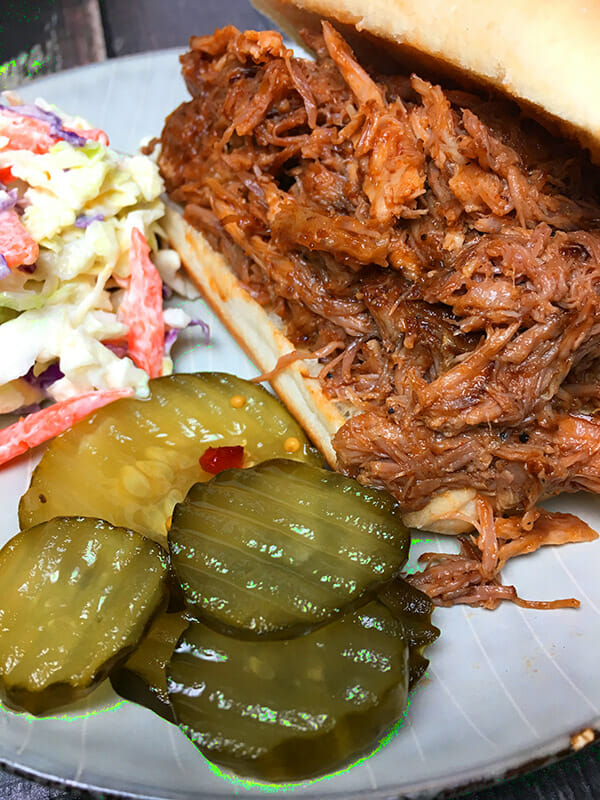
Serving and Pairing Suggestions
Choosing the Right Buns or Bread
Now that you’ve mastered the art of making the best damn pulled pork, it’s time to think about how to serve it. Choosing the right buns or bread is crucial, as it can make or break your pulled pork sandwich experience.
Opt for soft and slightly sweet buns or rolls that will complement the flavors of the pork without overpowering them. Brioche buns, potato rolls, or even homemade slider buns are all great options. Lightly toast the buns for added texture and warmth.
If you prefer a different carb option, consider serving the pulled pork on a crusty baguette or cornbread muffins. These alternatives add a unique twist and can make for a memorable pulled pork presentation.
Ultimately, choose the option that suits your taste and enhances the overall pulled pork experience.
Adding Coleslaw or Pickles as Toppings
To take your pulled pork sandwiches to the next level, consider adding some toppings that provide a balance of freshness, crunch, and tanginess. Coleslaw and pickles are classic choices that pair perfectly with pulled pork.
Coleslaw adds a refreshing and creamy element to the sandwich, cutting through the richness of the meat. Opt for a tangy coleslaw with a vinegar-based dressing that complements the smoky flavors of the pork.
Pickles, whether sweet or dill, provide a burst of acidity that balances the richness of the pork. The briny flavor and crisp texture of pickles add a satisfying contrast to each bite.
Consider layering the coleslaw and pickles directly on the pulled pork or serving them as accompaniments on the side. Either way, these toppings will elevate your pulled pork sandwich to a whole new level of deliciousness.
Pairing with Side Dishes
No pulled pork meal is complete without some mouthwatering side dishes to accompany it. Consider the flavors and textures that will complement the rich and smoky pulled pork.
Classic barbecue side dishes like baked beans, cornbread, and potato salad are all great choices. The sweetness of the baked beans, the crumbly texture of cornbread, and the creaminess of potato salad provide a perfect balance to the savory pulled pork.
For a lighter option, consider serving a refreshing salad with crisp greens, seasonal vegetables, and a tangy vinaigrette. This will help cut through the richness of the pork and provide a refreshing contrast.
Don’t forget about condiments like barbecue sauce, hot sauce, and mustard, which can tie the whole meal together. Offer a variety of options for your guests to customize their pulled pork experience.
Storing and Reheating Pulled Pork
Proper Storage Techniques
If you find yourself with leftover pulled pork, it’s important to store it properly to maintain its quality and prevent foodborne illnesses. Follow these storage guidelines to keep your pulled pork fresh and safe to eat.
First, allow the pulled pork to cool to room temperature before refrigerating or freezing. Divide the leftover pork into smaller portions based on your intended use. This will make it easier to reheat and reduce the risk of food waste.
For short-term storage, place the pulled pork in an airtight container or sealable plastic bag. The pork can be stored in the refrigerator for up to 4 days.
If you have a large amount of pulled pork or want to store it for an extended period, freezing is the best option. Wrap the pulled pork tightly in plastic wrap, followed by a layer of foil or place it in airtight freezer bags. The pork can be frozen for up to 3 months without significant loss of quality.
Reheating Leftover Pulled Pork
When it’s time to enjoy your leftover pulled pork, it’s crucial to reheat it properly to maintain its tenderness and flavor.
For refrigerated pulled pork, lightly moisten it with a small amount of barbecue sauce, broth, or water to prevent it from drying out. Heat the pork in a covered baking dish at a low temperature of around 275°F (135°C) until heated through. Be sure to check the internal temperature with a meat thermometer to ensure it reaches at least 165°F (74°C) for food safety.
If reheating from frozen, allow the pork to thaw in the refrigerator overnight. Then, proceed with the same reheating instructions as refrigerated pork.
Take care not to overheat the pulled pork, as this can result in dry meat. Covering it during reheating helps to retain moisture, and adding a touch of liquid will help keep it moist.
Creative Uses for Leftover Pulled Pork
Leftover pulled pork doesn’t have to be limited to sandwiches or reheated meals. Get creative and experiment with innovative ways to use your delicious pork.
One option is to incorporate the pulled pork into a hearty pasta dish. Toss it with your favorite pasta, vegetables, and a creamy or tomato-based sauce for a comforting meal.
Another idea is to use the pulled pork as a filling for tacos, enchiladas, or quesadillas. Add some cheese, salsa, and guacamole for a Tex-Mex twist that’s sure to impress.
Pulled pork can also be a great addition to soups, stews, or chili, providing a rich and smoky depth of flavor. Add it to your favorite recipe or create your own using the pulled pork as the star ingredient.
Get creative and think outside the box to make the most of your leftover pulled pork. The possibilities are endless, and you’re sure to invent some unique and mouthwatering dishes along the way.
In conclusion, making the best damn pulled pork requires careful consideration of various factors, from choosing the right cut of pork to properly preparing and cooking the meat. By following these comprehensive tips and techniques, you’ll be well on your way to achieving pulled pork perfection. Remember to have fun, experiment with flavors, and tailor the process to your personal taste preferences. Whether you’re hosting a backyard barbecue or enjoying a cozy meal at home, your perfectly cooked and flavor-packed pulled pork will be the star of the show. So grab your apron, fire up the smoker or grill, and get ready to impress your friends and family with the best damn pulled pork they’ve ever tasted.
